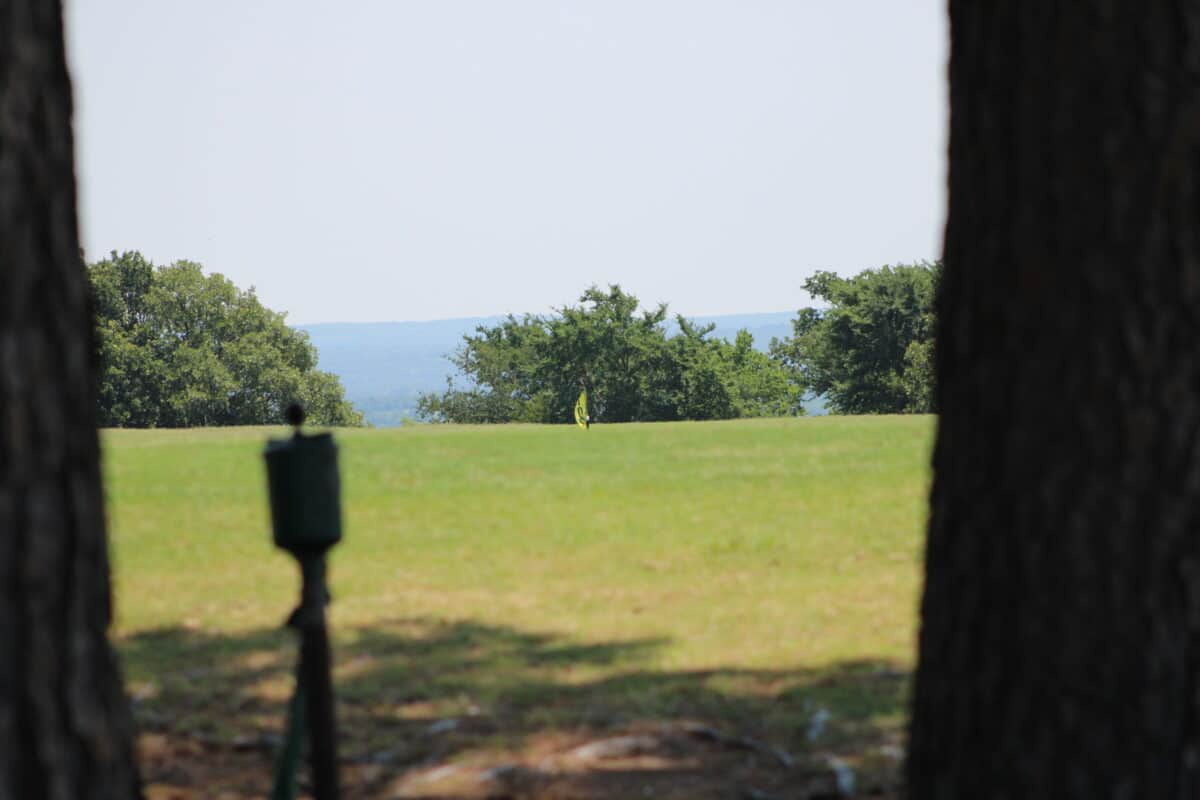A yardage book tells the golfers about the yards to the center of the green from many different points on a particular hole. While golf courses provide course markers, these books offer additional details. Amateur golfers are often confused about the terms and illustrations on the yardage book and want to know how to read them. In this regard, this article intends to answer the question: do you read yardage books?
Yard books can come with varying levels of information. Many professional players make additional entries in the books to account for factors such as incline and elevation, which are not accounted for in the book. Reading a yardage book takes seconds and can shave shots off your account. But how? Let’s discuss!
What is a Yardage Book?
A “yardage book” is a brochure or booklet, usually in pocket size, the pages of which contain detailed illustrations of each hole on a golf course. The illustrations show aerial views of each hole and indicate distances to hazards and landmarks on each hole.
Some distance books are quite sophisticated, printed on stock-rich glossy paper with full-color illustrations. Others are more basic, with black and white line art.
The Purpose of a Yardage Book
They all have the same goal: to help the golfer plan their route around the golf course. The main purpose of the yardage book is, not surprisingly, to provide the golfer with distances. On Hole 1, the illustration may show a hole slightly set back from the doglegs, with fairway bunkers 180 and 240 yards from the tee, as well as a small pond to the right of the fairway 200 yards. This can tell the golfer that the distance from a certain tree to the putting green is 140 yards. The shape of the hole, hazards and important landmarks are all noted, and the golfer is provided with distances.
These distances are usually given in meters from the teeing ground to the green. For example, an illustration of the fifth hole in the logbook might show the golfer the yards for each of the three possible landing points in the fairway; trees that could come into play on the drive; bunkers or other dangers endangering reckless impulses. These lengths help the golfer plan the best possible way to play the hole and (hopefully) avoid danger.
How Do You Read Yardage Books?
See the Book of Yards from the Tee Box
The yard book will give distances for hazards such as sand traps and water hazards. It will tell you how far you are in front of these dangers and how far to clear the danger. Other markers show how far you are within a dogleg when the fairway slopes to the right or left.
Find a Point of Reference Referred to in the Book of Yards after Hitting the Tee Shot
The yard book will show yards to the center of the green based on many different reference points. Add or subtract the number of yards based on its relationship to the point of interest. For example, if you are 5 yards past the benchmark and the yardage book states 132 yards, add 5 yards to the passer at a distance of 137 yards.
See the Green Page for the Hole You are Playing to Determine the Size of the Green
If you can see the pin, try to find out if the pin is at the front or back of the green. Adding or subtracting the shot distance must be interpreted to get to the front or back of the green for your shot. For example, if you are 137 yards off the center of the green and the pin is to the rear of a large green, you may need to add a few yards to your shot.
Determine the Direction of Your Putt can Travel
It is based on the green drawing yardage book. While the book will not provide an accurate reading, it will let you know where the predominantly green runs go and if it varies from different points on the green.
Other factors like wind, altitude and slope can change the extent of your shot.
Do All Golf Courses Offer Yardage Books?
Most golf courses don’t offer yardage books. They are typically found at high-end golf courses, where they may be available for a fee.
Recreational golfers are more likely to encounter distance books on higher-end golf courses – resorts and more expensive per day courses. Sometimes it is free and included in the green fee; more often than not, distance books are sold separately, and the golfer has the option of buying or not buying.
Organizers of golf tournaments can provide distance books free of charge or against payment. Some tournament organizers may have simple distance books printed if the tournament is played on a course that would not otherwise be offered.
But the point is that many, maybe even most recreational golfers rarely, if ever, use a yard book. More serious golfers and tournament golfers, however, find them very useful.
Are Yardage Books Getting Obsolete?
It’s a good question! The advent of GPS for golf courses made transport books an object of the 20th century. In tournaments that do not allow the use of GPS rangefinders, such as on the PGA Tour, distance books are still a must-have for golf pros and their caddies.
However, many high-end golf courses, and even some low-end golf courses, now offer video screens built into their golf carts, which display on-screen what was previously only available in the form of yardage books. And, of course, golf GPS units and smartphone golf GPS apps provide the same information, often in a way that is easier for many golfers to understand than the traditional printed yard book.
- Should Tee Boxes Be Level? - January 23, 2024
- 3 Hybrid Distance - November 15, 2023
- Innovations in Golf Mobility: An In-depth Review of Top Golf Scooters - October 12, 2023
